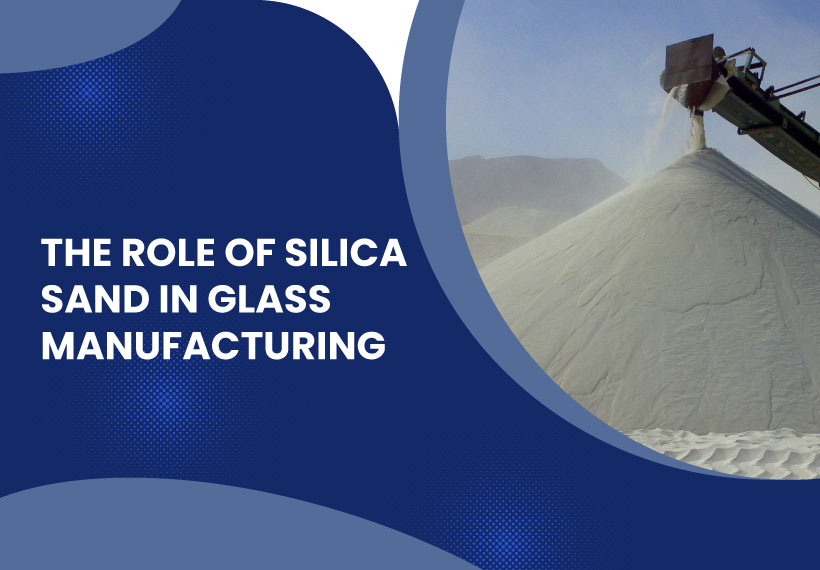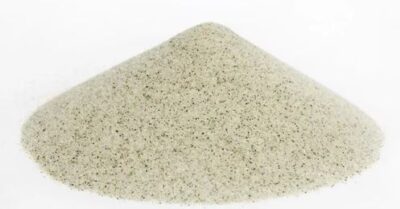The Role of Silica Sand in Glass Manufacturing

In this article, we’ll delve into the multifaceted role of silica sand in the glass manufacturing process.
Glass has long been part of daily life and is an indispensable material, with applications from windows to intricate glassware. Have you ever considered its components? Silica sand plays a central role in glass production.
The Magic of Glass
Glass has long held our attention with its translucence and fragility, captivating people of all generations for millennia. But what exactly makes glass so bewitching?
Its allure lies in its creation through an artistic combination of basic elements – silica sand playing an essential part.
With silica sand, the alchemy behind creating glass would be complete.
Silica Sand Unveiled: Composition and Properties
Silica sand, composed chiefly of silicon dioxide, boasts abundant properties essential to glass production.
From its high melting point and stability to its exceptional light-transmitting ability, silica sand is a critical foundational ingredient in glassmakers’ arsenals.
Melting Into Shape: Glass Manufacturing Process
It is an intricate dance of heat, chemistry and precision from raw materials to finished glass products.
Silica sand joins soda ash and limestone on a fantastic journey within a furnace as temperatures increase – eventually melting into the liquid glass that artists and engineers shape into various forms.
The Crucial Role of Silica Sand in Melting
At the core of this transformation lies silica sand’s heat-absorbing capabilities.
Once heated up, Silica acts like an effective thermal insulator by absorbing and dispersing heat evenly within its mixture – helping achieve uniformity by preventing sudden temperature fluctuations that might compromise glass integrity.
Types of Glass Produced Using Silica Sand

Silica sand’s adaptability lends itself to a diverse range of glass types, each tailored to specific needs.
Clear Glass: Through the Eyes of Sand
Clear glass, the epitome of transparency, relies on the pristine nature of silica sand. Its ability to maintain its clarity during the melting process is a testament to the purity of the sand used.
Coloured Glass: Infusions of Creativity
Integrating colour into glass involves an artistic blend of silica sand and metal oxides under heat to produce vibrantly hued glass pieces, adding aesthetic value.
Strengthening the Structure: Tempering and Annealing
Silica-enriched glass, though naturally substantial, benefits greatly from tempering and annealing processes.
These methods involve controlled cooling to enhance durability and prevent shattering; Silica’s presence adds stability to tempered glasses so they withstand real-world pressures without shattering.
Silica Sand Varieties and Selection
Not all silica sands are created equal. High-purity silica sand, free from contaminants, is the preferred choice for glass manufacturing due to its consistent composition and reliable performance.
High Purity Silica: A Prerequisite for Premium Glass
Premium glass requires premium ingredients. Careful selection and processing of high-purity silica sand ensures it has no impurities that could compromise the final product’s strength, clarity or chemical resistance.
Environmental Considerations and Sustainability
Glass industry companies strive for sustainable practices as the environmental consciousness increases.
Recycling silica-based glass conserves resources while decreasing landfill waste, making glass an outstanding example of the circular economy.
Recycling Silica-based Glass: A Green Pursuit
Recycled glass (commonly called “cullet”) offers an eco-friendly solution when used as raw material in manufacturing processes, significantly decreasing energy use while decreasing emissions – leading the charge towards environmental responsibility and conservation.
Innovations in Glass Manufacturing
Technology advances continue to reshape glass manufacturing environments.
Nanotechnology, in particular, has created ultra-thin glass sheets with unparalleled strength and flexibility, revolutionizing production practices across this sector.
Nanotechnology’s Touch on Ultra-Thin Glass
By manipulating Silica at the nanoscale, scientists have unlocked its full potential as a glass material that is as thin as paper yet astonishingly strong, opening doors for innovative uses in electronics, optics and beyond.
Silica Sand Beyond Glass: Diverse Applications
Silica sand’s influence extends well beyond glass manufacturing; it is used in construction, foundry casting, water filtration systems and even in producing silicon chips used by digital devices to power our digital world.
Quality Control: Ensuring Consistency and Performance
Glass manufacturing requires consistently high-quality components; to that end, silica sand must be subjected to stringent testing to guarantee reliable and safe glassware production.
The Fusion of Art and Science: Glass Blowing
Glass blowing, an exquisite art form, relies on the malleability of silica-rich molten glass that’s easy to manipulate with the skilled hands of artisans to craft intricate designs.
Glassblowing unites human creativity with scientific principles as an elegant display.
Challenges in Sourcing and Handling Silica Sand
While silica sand may be widely available, its acquisition can present unique challenges. Environmental regulations, transportation logistics and occupational health considerations all play a part in its addition.
Future Trends: Advancements and Prospects
Technology continues to advance, expanding the possibilities for silica-enhanced products.
Smart glass, equipped with responsive features such as light control and energy efficiency, offers a glimpse into what could be possible for glass innovation shortly.
Smart Glass: A Glimpse into Tomorrow
Imagine windows that change their tint depending on sunlight or touch-sensitive glass surfaces that turn into displays based on touch.
Smart glass heralds an exciting new era of interactive and energy-saving architecture thanks to Silica’s properties.
FAQs About Silica Sand’s Role in Glass Manufacturing
Is silica sand the only type of sand used in glass manufacturing?
Silica sand is often utilized for its purity and properties; however, other varieties with differing mineral makeups can also be helpful.
How does silica sand contribute to the glass recycling process?
Silica sand can be recycled back into glass production without losing quality, making it an indispensable component in recycling efforts.
Are there any health concerns related to silica sand exposure in glass factories?
Safeguards and ventilation systems must be in place in glass manufacturing facilities to reduce health risks associated with prolonged silica dust exposure.
Can glass innovation continue without silica sand?
Innovation may bring forth alternative materials, yet silica sand’s distinct properties make it hard to replace in glass manufacturing.
How does silica sand contribute to energy efficiency in glass production?
Silica sand’s heat-resistant properties allow manufacturers to more effectively use energy while maintaining high temperatures within glass furnaces, leading to more energy-efficient manufacturing processes and production methods.
Conclusion
From the sands of time to the windows of the future, Silica’s journey is one of transformation and innovation.
silica sand role in glass manufacturing has shaped our world, offering transparency, strength, and beauty in this versatile material.

